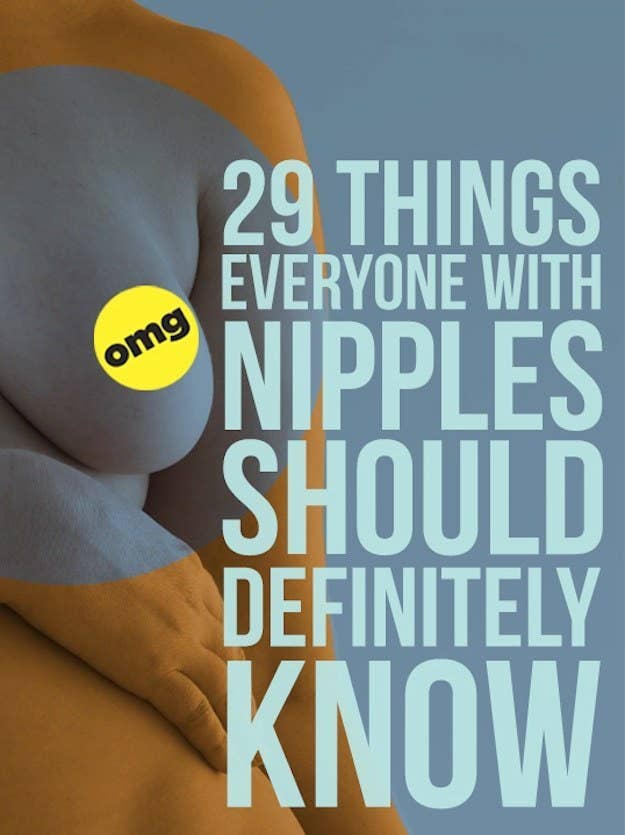
1.
Nipple-gasms are a thing.
"Some people do experience orgasm from nipple stimulation alone," Debby Herbenick, PhD, author of The Coregasm Workout (Seal Press, 2015), tells BuzzFeed Life in an email. "It's rare, but it happens."
2.
Although for some people, the nipples aren't even the most sensitive part of the breast.
Some studies have shown that the tops or sides or bottoms of the breast can be more sensitive for some people, Herbenick says.
3.
Everyone has nipples because of how fetuses develop in the womb: Nipples show up before sex organs (like vaginas, ovaries, testicles, penises) do.
4.
Nipples can come in a lot of different shapes, sizes, and colors.
Dark, light, pink, brown, big, small. It's all normal! If you want to see some examples of this glorious variety, check out this fabulous gallery of normal nipples at 007b.com.
5.
So can the areolae.
Areolae is plural for areola, which is the colored skin around your nipple. Areolae can be extremely light or very dark (or in between). They can also be as small as dimes or as wide as dinner plates. It's all normal!
6.
The little bumps on your areolae are called Areolar glands, or the Glands of Montgomery.
They're so named for William Montgomery, who first described them in a scientific paper in 1837. Oh, and they're totally normal and not something to worry about.
As far as why they exist... well, that's not totally clear. "They can secrete a little bit of fluid, but in general there's no functional purpose to them," Elisa Port, MD, chief of breast surgery at Mount Sinai Medical Center and the co-director of the Dubin Breast Center at Mount Sinai, tells BuzzFeed Life. "Some people think that babies might use them to sort of find their way to the nipple, because of the texture," she says. But that's just a guess.
7.
Something else that is totally normal: Pretty much everyone has at least some hair around their nipples.
Pluck or wax 'em if you're not a fan.
8.
If you are running in a long race, your shirt might chafe your nips so bad that they bleed!
Ways to help combat this: Vaseline, tape, not running marathons.
9.
Pregnancy can make your nipples and areolae get bigger and darker.
Thanks, hormones.
10.
Some people have inverted nipples.
That means instead of pointing out, the nipples actually are indented into the skin and point in. Some people get surgery to "fix" their inverted nipples, but that's generally an aesthetic choice, Port says.
One thing worth noting: "Whenever I see a patient who has an inverted nipple, I'm always careful about asking if it's new or a longstanding thing," Port says. "If it's a new thing, it can be a sign of a cancer behind that nipple pulling that nipple back." If you discover a newly inverted nipple, go to a doctor ASAP.
11.
Inverted nipples can make it harder to breastfeed — but not impossible.
"It becomes difficult for a baby to latch on if you have inverted nipples," Katharine O'Connell White, MD, MPH, chief of the division of general OB/GYN at Bay State Health, tells BuzzFeed Life. Good news, though: Nipple shields can help. "They put pressure around the areola and the nipple to try to break the little adhesions that hold the nipple inward," O'Connell White says. "If you can break up that tissue, then the nipple will be better able to pop out."
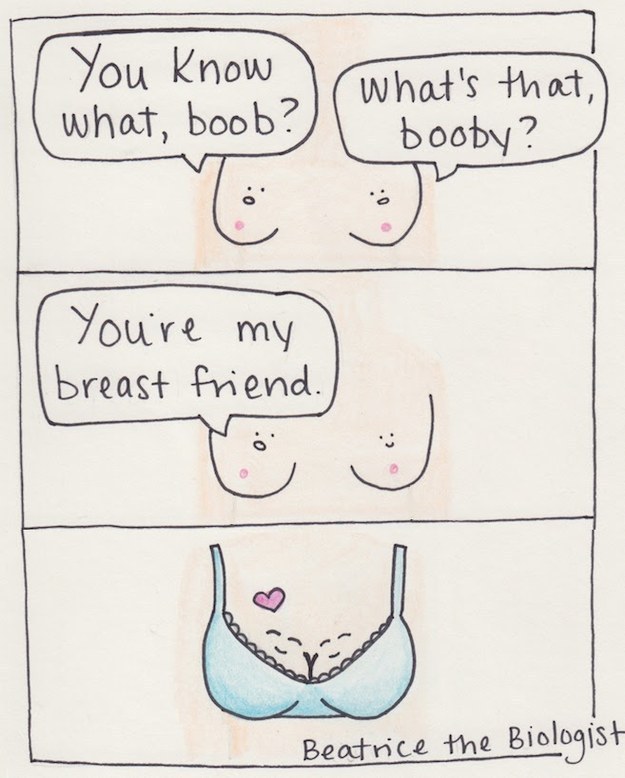
12.
Speaking of breastfeeding — it can be WAY harder than you expect.
"Breastfeeding can be incredibly difficult," O'Connell White says. "People expect it to be natural and easy, but more patients than not have a lot of difficulty with it, which can leave them feeling really discouraged." If you're having trouble and want to make it work, seek out the help of a lactation consultant. "Lactation specialists at hospitals can be incredibly helpful," O'Connell White says.
13.
And breastfeeding can also be hell on your nips.
Cracking, bleeding, sore nipples from breastfeeding aren't necessarily a health problem, but they can be incredibly painful (and can make you not want to breastfeed anymore). "I talk to my patients a lot about good nipple care," O'Connell White says. You can use Lanolin (or a similar ointment) to help keep your nipples moisturized between feedings. But if nothing is working, it's worth reaching out to your doctor to see if you might have a yeast infection. "That's easily treated, but it needs to be caught first," O'Connell White says.
14.
EVERYONE can get breast cancer.
No matter what gender you were assigned at birth or how you identify.
According to the American Cancer Society, more than 99% of breast cancers occur in women, but a little over 2,360 men in the United States are diagnosed with breast cancer each year, and about 430 die from it. There isn't enough research to know about the incidence rate of breast cancer in transgender men and women — "No cancer registries collect information about gender identity or sexual orientation, so we don't really know anything about incidence/prevalence," Liz Margolies, LCSW, executive director of the National LGBT Cancer Network, tells BuzzFeed Life in an email.
The bottom line is that if you find a lump where there wasn't one before, you should see a doctor right away — regardless of your gender. That's especially true if you have a family history of breast cancer.
15.
Changes to your nipples can be red flags for breast cancer, also.
"When we talk to our patients about signs of cancer, we talk about lumps, and dimpling of the skin, and changes to the nipple — crusting, scabbing, hardening of the nipple, and sudden inversion of the nipple are all warning signs," Port says. See a doc if you're dealing with any of these issues.
16.
Your nipples can sometimes leak fluid, even if you are not pregnant or breastfeeding.
This can be a normal response to getting your breast or nipple squeezed really hard (like if you get a mammogram), Port says. But it could also be a sign of trouble. According to Port, you should see a doctor if you nipple discharge happens randomly (like you wake up one morning and there's a stain in your shirt); if it's bloody; or if it is only happening on one side and not both.
17.
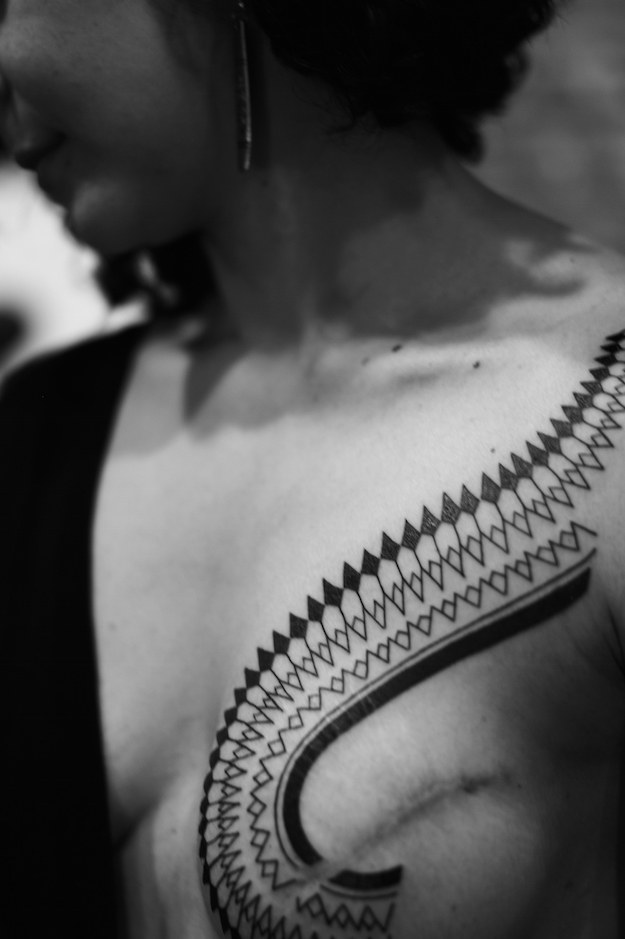
Pictured above: Diane, a breast cancer survivor, shows her tattoo, created by tattoo artist Roxx. The nonprofit organization P.ink connects survivors with tattoo artists who can create works of art where their breasts used to be.
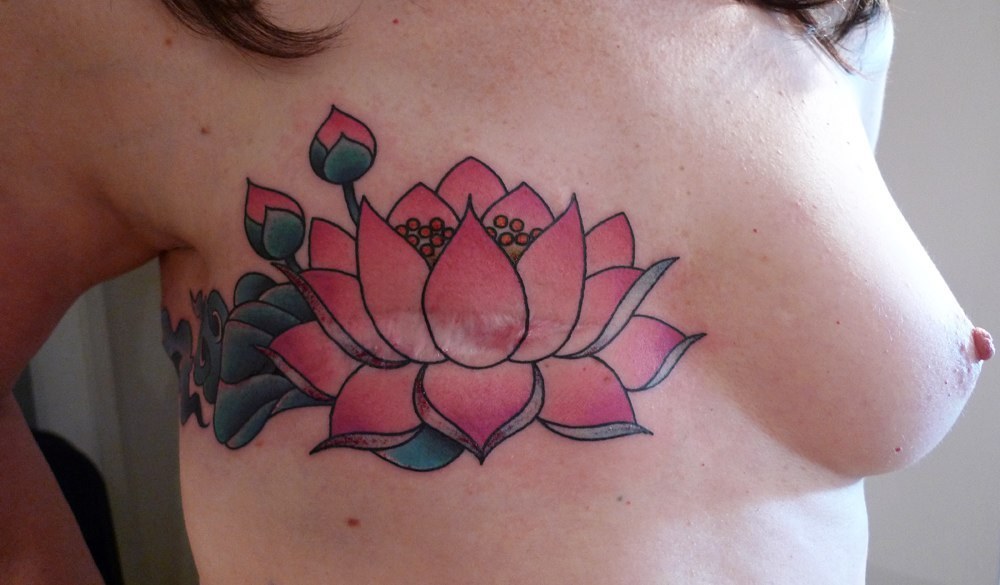
18.
If you get breast augmentation, you might lose some sensation in your nipples.
One study showed that the bigger the implant, the more likely the person was to report loss of sensation.
The same is true for breast reduction — you might lose some, or even all, sensation.
19.
Implants shouldn't make it harder to breastfeed, but getting a breast reduction possibly can.
"In general, it's a huge misconception [that implants make it hard to breastfeed]," Port says. "In general the implant usually goes behind the breast, and even sometimes behind the muscle behind the breast. So it should not interfere with the ability to breastfeed."
When it comes to breast reduction, though, it can be a bit more complicated — it often depends on how the surgery was performed, and even then it's hard to know until you actually try. "If the nipple/areola are moved on the breast [during the surgery], the milk ducts are often cut, and if they are, breastfeeding may not be possible," O'Connell White says in an email. "But more breast surgeons are trying to perform surgeries that keep the blood supply and (more importantly) the nerves intact under the nipple/areola," she says. If you're getting a breast reduction, be sure to ask if it's possible to do the surgery in a way that maximizes your chances of breastfeeding in the future. And if you've already had the surgery, speak with a lactation consultant for guidance and help.
20.
Implants can make treating and diagnosing cancer more difficult, though.
Mammograms shouldn't be an issue, Port says — the doctors will need to get more pictures during the mammogram if you have implants, but they shouldn't have a hard time getting those pictures. The problems might arise in the next stages, though. "If an abnormality is detected on a mammogram, implants might make it more difficult to biopsy with a needle," Port says. Biopsies are less invasive than surgery, and the general standard of care if something fishy is seen on a mammogram. If a doctor can't do a biopsy on a patient, they'll have to surgically remove the suspicious cells, which is a much more invasive procedure.
21.
Nipple piercings can take between three and six months to heal, and sometimes longer.
For the scoop on nipple piercing, BuzzFeed Life reached out to Elayne Angel, a piercing professional who has been piercing since the 1980s. She's the author of The Piercing Bible: The Definitive Guide to Safe Body Piercing (Crossing Press, 2009), and a member of the Association of Professional Piercers, a nonprofit educational organization that requires members to meet certain health and safety standards.
"There's some differences in the healing time between male and female nipple piercings," Angel says. "Female nipples have more function and can take longer to heal. For men it typically takes three to four months or so, and for women six months or longer."
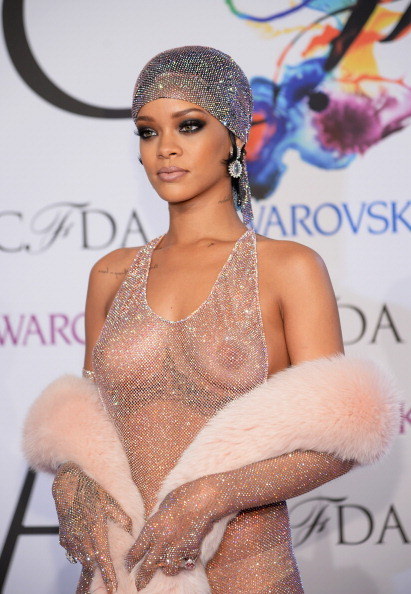
22.
Nipple piercings can make your nipples bigger.
"It's important for people to know — and especially people with smaller nipples — nipple piercing can result in permanent development in the area," Angel says.
23.
And nipple piercings can close up REALLY fast.
"My suggestion is that if you've pierced your nipples and you like them, you should never take the jewelry out unless you're changing jewelry," Angel says. "Even after being in for years, nipple piercings can close or shrink in moments."
24.
If you get your nipples pierced, you shouldn't allow anyone to lick them until they're fully healed.
Yes, that means waiting for months. But think about it: If you had an open wound on your leg, you wouldn't let someone put their mouth on it, would you? It's the same thing.
If you really want to feel a tongue against your nipples, Angel suggests cutting open a condom and using it as a barrier. Gotta keep the germs out!
25.
Some people have three nipples.
Extra nipples (called supernumerary nipples) typically develop along two "milk lines" that run from your armpit through your normal nipples and down your sides to the groin. Those milk lines typically disappear in the womb... but for some people they don't. Extra nips can often be mistaken for moles.
Incidence rates vary depending on the report (from 0.22% of the population to 5.6% of the population), although most research points to the fact that men tend to get them more often than women do.
26.
27.
In 2012, a 32-year-old man was found to have seven nipples.
He was the second person in recorded history with so many nipples, according to the report in the Indian Journal of Human Genetics.
28.
In 2010, researchers wrote about a patient who had a nipple on the sole of the foot.
